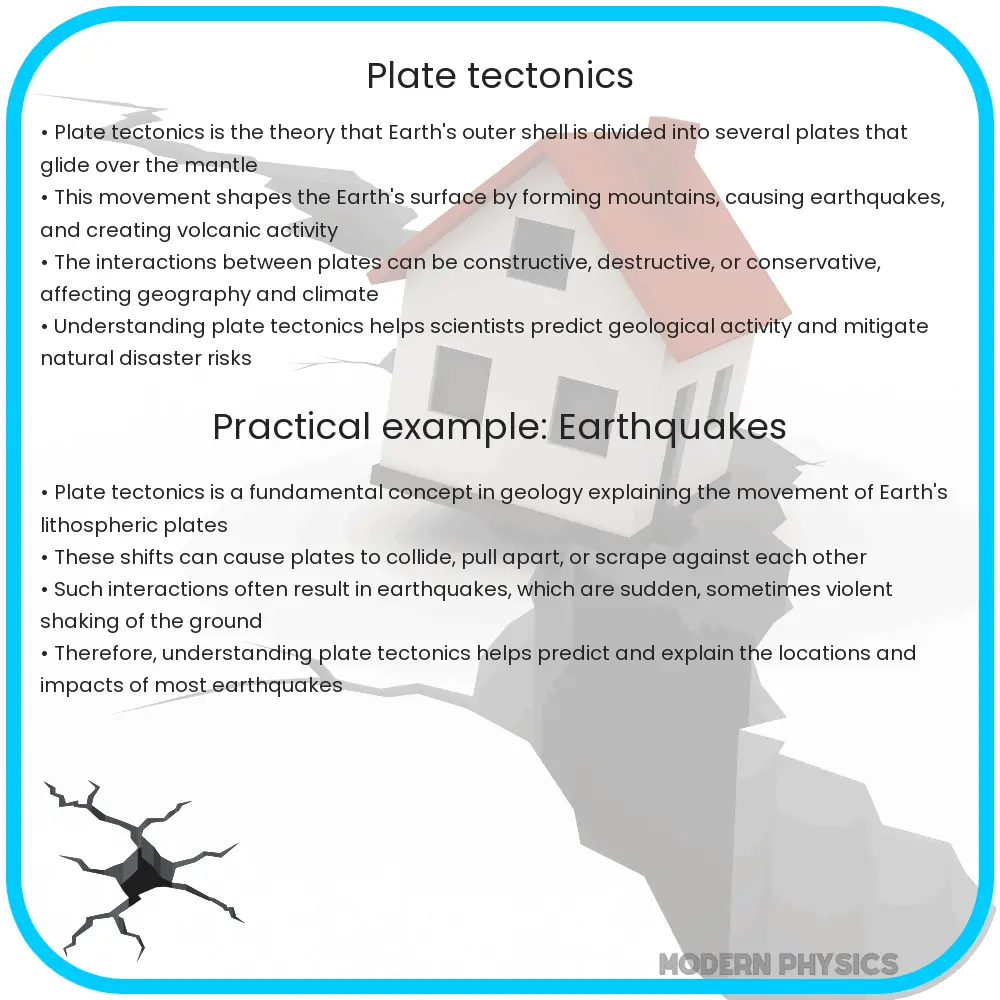Explore the fundamentals of plate tectonics, including movements, earthquakes, volcanic activity, and continental drift, and how they shape our dynamic Earth.

Understanding Plate Tectonics: Movements, Earthquakes, and Formation
Plate tectonics, a foundational concept in geology, explains the dynamic movement of Earth’s lithosphere, which is divided into several large and small tectonic plates. These plates float atop the semi-fluid asthenosphere, driving continental drift, mountain formation, earthquakes, and volcanic activity. This article delves into the movements of tectonic plates, their role in earthquakes, and the processes leading to their formation.
The Movements of Tectonic Plates
The Earth’s lithosphere is broken into tectonic plates that move in different directions due to the heat from the Earth’s core causing convection currents in the mantle. There are three primary types of plate boundaries: divergent, convergent, and transform.
- Divergent boundaries: Here, plates move away from each other, leading to the formation of new crust as magma rises and cools at the boundary, creating mid-ocean ridges or rift valleys.
- Convergent boundaries: Plates move towards each other, resulting in one plate diving beneath another in a process known as subduction, which can create deep ocean trenches and mountain ranges.
- Transform boundaries: Plates slide past one another, causing friction and earthquakes. The San Andreas Fault in California is a famous example of a transform boundary.
Earthquakes and Tectonic Plates
Earthquakes are closely linked to the movements of tectonic plates. They typically occur near plate boundaries where the stress from moving plates accumulates until it exceeds the frictional force holding them together. When this stress is released, it causes the ground to shake. The point within the Earth where this stress release occurs is called the hypocenter, and the point directly above it on the surface is the epicenter. Earthquakes can be devastating, leading to significant loss of life and property.
The Formation of Tectonic Plates
The formation of tectonic plates is a result of the Earth’s internal heat, which creates convection currents in the mantle. These currents cause the lithosphere to break into plates. The theory of plate tectonics provides a coherent explanation for the distribution of earthquakes, volcanoes, and mountain ranges, as well as the fossil and rock formations observed across different continents.
Volcanic Activity and Plate Tectonics
Volcanic activity is another significant phenomenon associated with the movements of tectonic plates. Volcanoes primarily form along plate boundaries where magma from the Earth’s mantle can reach the surface. At divergent boundaries, such as the Mid-Atlantic Ridge, magma rises to fill the gap created by separating plates, forming new crust. Convergent boundaries, on the other hand, often see one plate being subducted beneath another, leading to the melting of mantle material and the rise of magma, creating volcanic arcs like the Pacific Ring of Fire.
Continental Drift and Plate Tectonics
The theory of plate tectonics also explains the phenomenon of continental drift, first proposed by Alfred Wegener in 1912. According to this theory, continents move across the Earth’s surface over geologic time, explaining why distant continents have similar geological structures and fossil records. The movement of the African Plate away from the South American Plate, for example, is evidenced by the fit of the continental shelves and the distribution of fossils and rock formations across both continents.
Conclusion
Plate tectonics is a comprehensive theory that has revolutionized our understanding of Earth’s geological features and processes. By explaining the movement of tectonic plates, it sheds light on the formation of mountains, earthquakes, volcanic activity, and the phenomenon of continental drift. These movements are driven by the Earth’s internal heat, leading to the continuous reshaping of our planet’s surface. Understanding plate tectonics is crucial for predicting natural disasters, exploring mineral resources, and comprehending the Earth’s past and future geological changes. As research advances, our knowledge of plate tectonics continues to evolve, offering deeper insights into the dynamic planet we call home.
